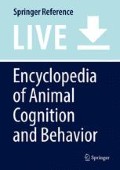References
Asa, C. S., Marshall, F., & Fischer, M. (2012). Affiliative and aggressive behavior in a group of female Somali wild ass (Equus africanus somalicus). Zoo Biology, 31(1), 87–97.
Baran, N. M., Sklar, N. C., & Adkins-Regan, E. (2016). Developmental effects of vasotocin and nonapeptide receptors on early social attachment and affiliative behavior in the zebra finch. Hormones and Behavior, 78, 20–31.
Bardi, M., Prugh, A. M., Eubanks, B. T., Trexler, K., Bowden, R. L., Evans, S., … Huffman, M. A. (2017). Physiologic correlates of interactions between adult male and immature long-tailed macaques (Macaca fascicularis). Journal of the American Association for Laboratory Animal Science, 56(6), 718–728.
Berger, J. (1980). The ecology, structure and functions of social play in Bighorn sheep (Ovis canadensis). Journal of Zoology, 192(4), 531–542.
Braun, A., Walsdorff, T., Fraser, O. N., & Bugnyar, T. (2012). Socialized sub-groups in a temporary stable Raven flock? Journal of Ornithology, 153(1 Suppl), 97–104.
Carter, G. G., & Wilkinson, G. S. (2015). Intranasal oxytocin increases social grooming and food sharing in the common vampire bat Desmodus rotundus. Hormones and Behavior, 75, 150–153.
Clegg, I. L. K., Rödel, H. G., & Delfour, F. (2017). Bottlenose dolphins engaging in more social affiliative behaviour judge ambiguous cues more optimistically. Behavioural Brain Research, 322, 115–122.
Clutton-Brock, T. (2016). Mammal societies. Chichester: Wiley.
Connor, R., Mann, J., & Watson-Capps, J. (2006). A sex-specific affiliative contact behavior in Indian ocean bottlenose dolphins, Tursiops sp. Ethology, 112(7), 631–638.
Cords, M. (1995). Predator vigilance costs of allogrooming in wild blue monkeys. Behaviour, 132(7–8), 559.
De Dreu, C. K. W. (2012). Oxytocin modulates cooperation within and competition between groups: An integrative review and research agenda. Hormones and Behavior, 61(3), 419–428.
Defler, T. R. (1995). The time budget of a group of wild woolly monkeys (Lagothrix lagotricha). International Journal of Primatology, 16(1), 107–120.
Dugatkin, L. A. (2013). Principles of animal behavior: Third international student edition (3rd ed.). New York: WW Norton.
Gould, L. (1997). Affiliative relationships between adult males and immature group members in naturally occurring ringtailed lemurs (Lemur catta). American Journal of Physical Anthropology, 103(2), 163–171.
Hamilton, W. D. (1964). The genetical evolution of social behavior. Journal of Theoretical Biology, 7, 1–52.
Ju, S., & Lee, S.-I. (2016). Effect of kinship on the allopreening among juvenile Bengalese finches. Animal Cells and Systems, 20(4), 213–217.
Judge, P. G. (2000). Coping with crowded conditions. In F. Aureli & F. B. M. de Waal (Eds.), Natural conflict resolution (pp. 129–154). Berkeley: University of California Press.
Kenny, E., Birkhead, T. R., & Green, J. P. (2017). Allopreening in birds is associated with parental cooperation over offspring care and stable pair bonds across years. Behavioral Ecology, 28(4), 1142–1148.
Lawson Handley, L. J., & Perrin, N. (2007). Advances in our understanding of mammalian sex-biased dispersal. Molecular Ecology, 16(8), 1559–1578.
Martin, P., & Bateson, P. (2007). Measuring behaviour: An introductory guide (3rd ed.). Cambridge, UK: Cambridge University Press.
Nunes, S., Muecke, E.-M., Anthony, J. A., & Batterbee, A. S. (1999). Endocrine and energetic mediation of play behavior in free-living Belding’s ground squirrels. Hormones and Behavior, 36(2), 153–165.
Palagi, E. (2018). Not just for fun! Social play as a springboard for adult social competence in human and non-human primates. Behavioral Ecology and Sociobiology, 72(6), 90.
Rault, J.-L. (2019). Be kind to others: Prosocial behaviours and their implications for animal welfare. Applied Animal Behaviour Science, 210, 113–123.
Romero, T., Nagasawa, M., Mogi, K., Hasegawa, T., & Kikusui, T. (2015). Intranasal administration of oxytocin promotes social play in domestic dogs. Communicative & Integrative Biology, 8(3), e1017157.
Seyfarth, R. M., & Cheney, D. L. (2012). The evolutionary origins of friendship. Annual Review of Psychology, 63(1), 153–177.
Silk, J. B. (2007). The adaptive value of sociality in mammalian groups. Philosophical Transactions of the Royal Society B-Biological Sciences, 362(1480), 539–559.
Slater, K. Y., Schaffner, C. M., & Aureli, F. (2009). Sex differences in the social behavior of wild spider monkeys (Ateles geoffroyi yucatanensis). American Journal of Primatology, 71(1), 21–29.
Smith, J. E. (2014). Hamilton’s legacy: Kinship, cooperation and social tolerance in mammalian groups. Animal Behaviour, 92, 291–304.
Smith, J. E., Memenis, S. K., & Holekamp, K. E. (2007). Rank-related partner choice in the fission–fusion society of the spotted hyena (Crocuta crocuta). Behavioral Ecology and Sociobiology, 61(5), 753–765.
Stevens, J. R., & Gilby, I. C. (2004). A conceptual, framework for nonkin food sharing: Timing and currency of benefits. Animal Behaviour, 67, 603–614.
Stone, A. I. (2008). Seasonal effects on play behavior in immature Saimiri sciureus in eastern Amazonia. International Journal of Primatology, 29(1), 195–205.
Sussman, R. W., Garber, P. A., & Cheverud, J. M. (2005). Importance of cooperation and affiliation in the evolution of primate sociality. American Journal of Physical Anthropology, 128(1), 84–97.
Szykman, M., Engh, A. L., Van Horn, R. C., Funk, S. M., Scribner, K. T., & Holekamp, K. E. (2001). Association patterns among male and female spotted hyenas (Crocuta crocuta) reflect male mate choice. Behavioral Ecology and Sociobiology, 50(3), 231–238.
Tobias, J. A., Sheard, C., Seddon, N., Meade, A., Cotton, A. J., & Nakagawa, S. (2016). Territoriality, social bonds, and the evolution of communal signaling in birds. Frontiers in Ecology and Evolution, 4, 74.
Trivers, R. L. (1971). The evolution of reciprocal altruism. The Quarterly Review of Biology, 46(1), 35.
Author information
Authors and Affiliations
Corresponding author
Editor information
Editors and Affiliations
Rights and permissions
Copyright information
© 2019 Springer Nature Switzerland AG
About this entry
Cite this entry
Jasso del Toro, C., Nekaris, K.AI. (2019). Affiliative Behaviors. In: Vonk, J., Shackelford, T. (eds) Encyclopedia of Animal Cognition and Behavior. Springer, Cham. https://doi.org/10.1007/978-3-319-47829-6_1040-1
Download citation
DOI: https://doi.org/10.1007/978-3-319-47829-6_1040-1
Received:
Accepted:
Published:
Publisher Name: Springer, Cham
Print ISBN: 978-3-319-47829-6
Online ISBN: 978-3-319-47829-6
eBook Packages: Springer Reference Behavioral Science and PsychologyReference Module Humanities and Social SciencesReference Module Business, Economics and Social Sciences

